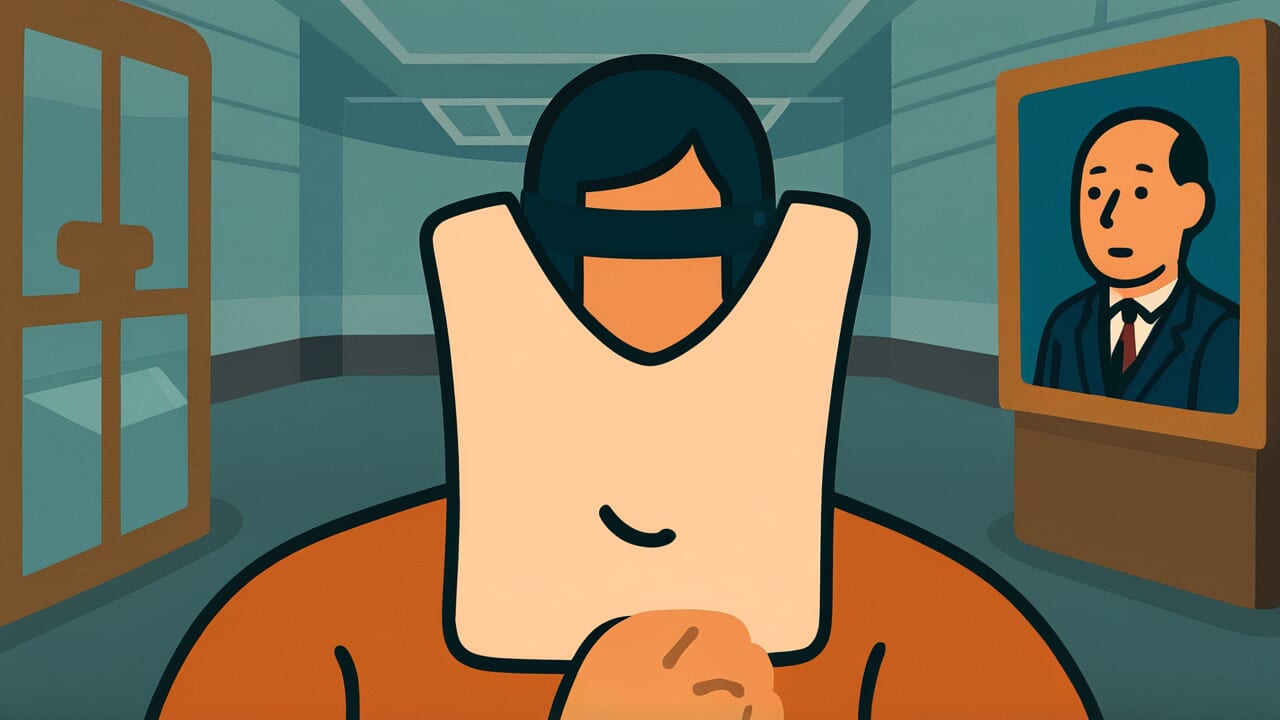How to Read “No eyes in the back”
Ushiro ni me nashi
Meaning of “No eyes in the back”
“No eyes in the back” teaches us to move forward without dwelling on the past. Just as human eyes are only on the front of our faces, we should walk toward the future, not the past.
This proverb is used for people who remain trapped by past failures or regrets. It also applies to those who rest on past successes.
There’s no point in worrying about what’s already done. The saying encourages a positive attitude of focusing on what we can do now.
In modern society, records remain on social media and other platforms. We tend to keep looking back. But this proverb reminds us of something important.
The direction of our eyes shows us how we’re meant to live. We’re designed to face forward. We can’t change the past, but we can change the future through our actions today.
This short phrase carries a message full of hope.
Origin and Etymology
There are no clear written records about the origin of “No eyes in the back.” However, we can make interesting observations from the structure of this expression.
As a matter of human anatomy, our eyes exist only on the front of our faces. From a biological perspective, this developed to detect dangers ahead and determine the path forward.
To see behind us, we must deliberately turn around. This physical characteristic is considered the core of this proverb.
Japan has long held a culture that values “facing forward” as a virtue. Even in the spirit of bushido, moving forward without being trapped by past failures or glory was emphasized.
Zen philosophy also teaches the importance of “this present moment.” The idea of warning against attachment to the past is deeply rooted in Japanese thought.
The expression “No eyes in the back” combines this physical fact with spiritual teaching. It represents a crystallization of Japanese wisdom.
Our ancestors elevated the obvious fact that eyes only face forward into a life principle. Their insight is deeply moving.
Within these simple words lies a clear message about how to live.
Usage Examples
- What’s done is done. No eyes in the back, so let’s move on to the next thing.
- There’s no point clinging to past glory. No eyes in the back, remember?
Universal Wisdom
Behind the long tradition of “No eyes in the back” lies a fundamental human trait: attachment to the past. We humans are creatures who engrave all memories in our hearts, both joyful and sad.
This ability is necessary for survival. But it also becomes a source of suffering.
Past failures replay in our minds repeatedly, stealing our confidence. Past successes become idealized and sometimes serve as excuses to avoid present effort.
Humans are creatures easily bound by the invisible chains of the past.
But our ancestors noticed something important. The very structure of our bodies, with eyes only in front, teaches us something essential.
Nature designed us to live facing forward. To see behind, we must deliberately turn our heads.
This should only be done occasionally for checking. We shouldn’t constantly face that direction. Perhaps this is a message from nature itself.
This proverb understands human weakness. Yet it still teaches the importance of facing forward. The past cannot be changed, but the future can be changed by choices made in this moment.
That hope is the driving force that keeps humans walking forward.
When AI Hears This
Human attention works like a spotlight with a fixed range it can illuminate at once. Cognitive psychology research shows humans can focus attention on about 15 degrees of visual angle simultaneously.
In other words, when looking forward, you literally cannot see behind. What’s interesting is that this proverb refers not only to spatial “behind” but also temporal “behind.”
Time flows in only one direction as a physical law. According to the law of entropy increase, the flow from past to future is irreversible.
Just as we cannot see spatially behind us, we cannot change the temporal behind, which is the past.
Humans can avoid danger and respond to the future by directing attention forward. But no matter how much we look back, the past cannot be modified.
Also noteworthy is how the human brain allocates energy between future prediction and past memory retention. About 20 percent of the brain’s energy consumption goes to predictive processing.
Meanwhile, past memories degrade over time. This is a rational design as a survival strategy, concentrating resources on the changeable future.
This proverb expresses in one phrase the dual constraint that human cognitive systems are optimized for the “forward” direction, both spatially and temporally.
Lessons for Today
“No eyes in the back” teaches modern people about the importance of “where to direct our gaze” in life. In modern society, digital records preserve the past indefinitely.
On social media, we can easily view even other people’s past posts. Opportunities to look back have increased more than ever before.
That’s precisely why we need to consciously choose to face forward. Learning from past failures as lessons is important. But we don’t need to stay there.
Once you’ve learned, lift your gaze and look ahead. The same applies to past successes. They can be sources of confidence, but not reasons to neglect current effort.
Specifically, take time to reflect at the end of each day. Then start the next morning with a fresh mindset. Extract lessons from failed projects, then turn your eyes to the next challenge.
Such habits of switching gears will move you forward.
Your eyes facing forward is not a coincidence. It’s proof that you were born to live facing forward.
The past only needs occasional checking. Your life lies ahead of you.



Comments